Contents
Fechtner’s boletus (boletus or Fechtner’s pain, lat. – Butyriboletus fechtneri) is an edible mushroom with dense, fleshy flesh. It occurs in broad-leaved and mixed forests of the Caucasus and the Far East. It does not have a strong taste or pronounced smell, but it is absolutely safe.
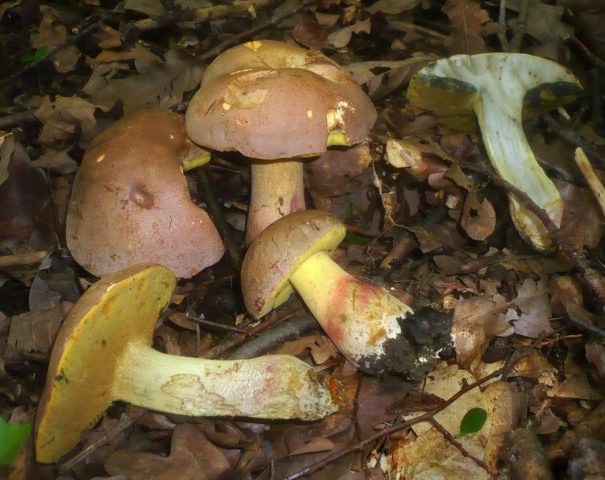
Mushrooms are one of the most common and commonly found mushrooms.
What do Fechtner mushrooms look like?
The fungus belongs to the tubular group, that is, the reverse side of the cap resembles a finely porous sponge of a rich yellow color. In adult specimens, spore spots of an olive or rusty hue are clearly distinguishable. There is no cover left.

Hat diameter can reach 30 cm
The upper part is smooth, becoming slightly wrinkled over time. At high humidity it becomes covered with a mucous layer. In dry weather – matte, pleasant to the touch.
The cap diameter is from 5 to 16 cm. In young mushrooms, it is round in shape. As it grows, it becomes hemispherical, cushion-shaped, then flatter. Colour: silvery gray shiny or pale brown.
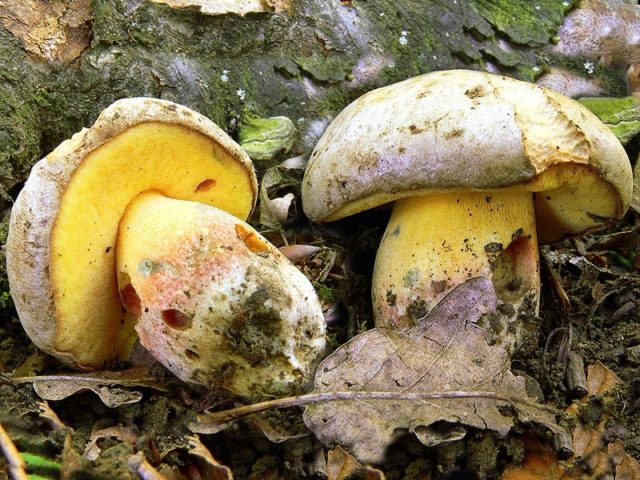
The length of the spore tubes in Fechtner’s boletus is 1,5–2,5 cm
The pulp is white dense, when cut or broken, it quickly turns blue.
The stem is tuberous, barrel-shaped or rounded. Over time, it becomes elongated cylindrical with a slight thickening downwards. It reaches a height of 12–14 cm, in volume – from 4 to 6 cm. It has a pale yellow, gray or slightly brownish color, sometimes acquires a mesh pattern. At the base it may have a red-brown, brown, ocher color. On the cut – white or milky. Sometimes red streaks are visible.
Where do Fechtner mushrooms grow?
The fungus is not widely distributed on the territory of the Federation. More common in the Caucasus or the Far East. He likes a warm mild climate and the presence of frequent precipitation.
Fechtner’s bolt prefers calcareous soil of broad-leaved or mixed forests. It can be found near oaks, lindens or beeches. Large clusters occur in sunny glades, forest edges, near abandoned forest paths.
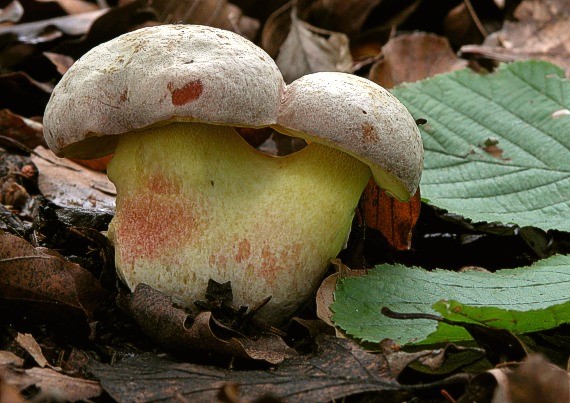
The chance to find Fechtner mushroom mycelium is higher in old dense forests that are at least 20 years old
Mushrooms grow singly or in groups of 3–5. Large mushrooms are extremely rare.
Is it possible to eat Fechtner mushrooms
Boletus Fechtner belongs to the category of edible mushrooms. It is suitable for consumption raw, boiled or fried. Can be added to various dishes, canned (salted, marinated), dried, frozen.
False doubles
The Fechtner pain itself is safe, however, inexperienced mushroom pickers have a great chance of confusing it with one of the conditionally edible and even poisonous species.
Rooted boletus. Inedible, but not poisonous either. The pulp is very bitter, absolutely unsuitable for cooking. In appearance, it is very similar to Fechtner’s boletus. It has a similar semi-convex shape, tuberous stalk, yellow spore-bearing layer. You can distinguish by the color of the cap: it is lighter with a greenish, bluish or gray tint around the edges.
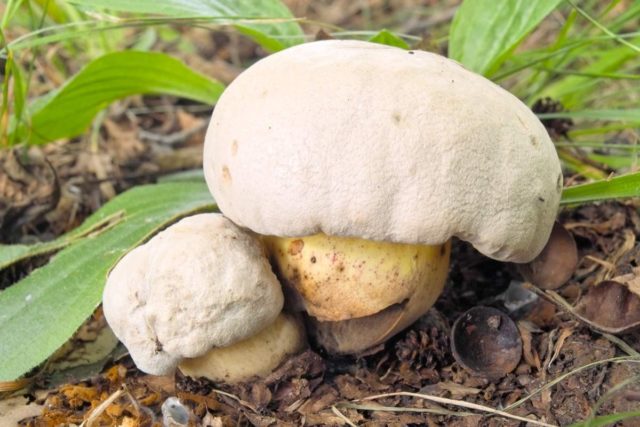
When pressed, a blue spot appears on the hat
Semi-white mushroom (yellow boletus). They belong to the conditionally edible category. It can be consumed boiled, fried, pickled. The pulp has a distinct smell of iodine, which becomes dull after heat treatment. It differs from Fechtner’s boletus in a lighter color and the absence of a mesh pattern on the leg.
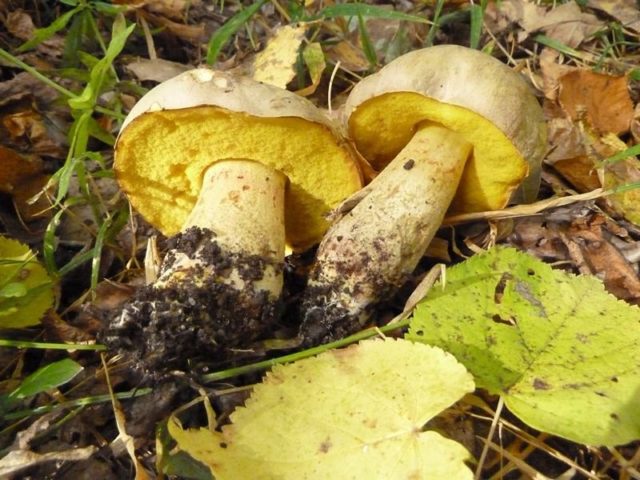
On the break, the flesh of the yellow boletus does not change color
gall fungus. Very similar to Fechtner’s boletus, it is poisonous. The cap is smooth matte grayish-brown in color. The leg is thick, cylindrical, yellowish-brown in color, but without a characteristic mesh pattern. The tubular layer is white or grey. The taste is bitter and unpleasant.
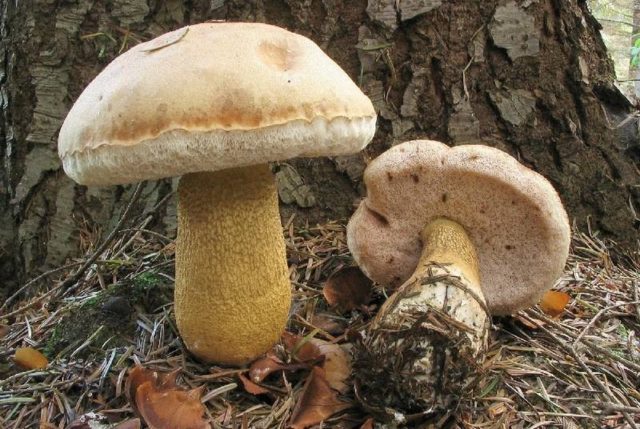
Even after heat treatment, the pulp remains unbearably bitter.
Collection rules
Boletus Fechtner belongs to protected mushrooms, it is very rare. You can find it in the summer-autumn period (July-September) in areas with a warm, humid climate.
Use
Fechtner’s pain is classified as category III. It does not have a pronounced mushroom taste or aroma, but is quite nutritious. It is often compared to a porcini mushroom.
Difficulties with cleansing, as a rule, do not arise. Fallen leaves do not stick to the smooth cap, and the porous tubular layer is easily washed under running water.

Worm fungi can cause helminth infection
Any recipe that includes a sufficient amount of aromatic spices is suitable for making Fechtner pickled mushrooms.
In addition to canning, the fruits tolerate freezing or drying well. They can be used raw in salads.
Conclusion
Boletus Fechtner is a rare protected mushroom with an interesting coloration. It is edible, but does not differ in taste or aroma. It is not necessary to collect it without special need and specially introduce it into your diet.










